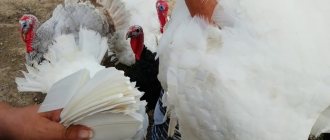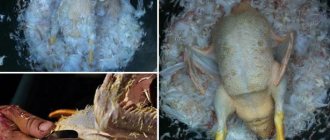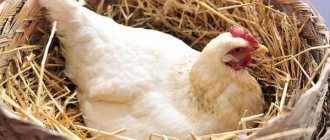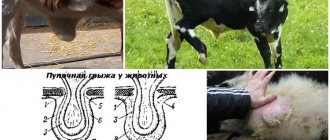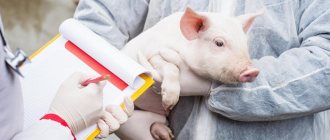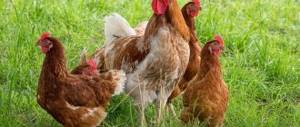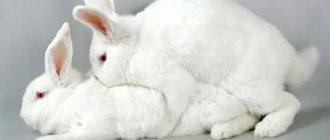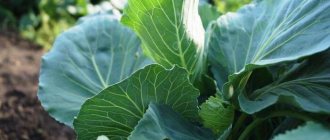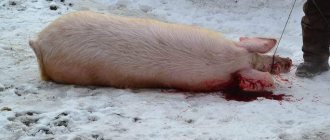Turkey fights. Ways to solve the problem
Every farmer often encounters aggressive behavior of poultry. Birds in this regard are distinguished by particularly frequent attacks of aggression. This problem is becoming increasingly relevant due to the growing popularity of breeding poultry in the households of our homeland.
All rules and recommendations for breeding poultry have their own importance. Only by following them can we get a healthy and strong generation. The size of the flock and the mass of its individual individuals also depend on this.
In order to prevent turkeys from injuring each other, it is necessary to understand the existing causes of aggression and methods of preventing it. In this article we will help poultry house owners understand this problem.
The main factors causing aggression in turkeys include:
- Peculiarities of breed behavior. Each adult male has his own character, which has a significant influence on his behavior.
- Turkeys get into fights and start pecking at each other during mating. It is during this period that the majority of conflicts occur.
- Often, poultry begin to squabble when they are not happy with their living conditions. In this case, you should reconsider your approach to the conditions of detention.
- Insufficient house size also negatively affects the behavior of turkeys and turkey hens. They are quite large birds, and require a lot of space when breeding them. The size of the premises must be calculated in such a way that there is at least one square meter of area per individual.
- Poor nutrition or lack of it causes outbursts of rage in birds. They become aggressive and begin to make attempts to get rid of weaker competitors. They peck at everyone who is nearby. They deal with smaller turkey poults.
About
Preventing fights in turkeys
Compliance with veterinary and zootechnical standards will help to avoid aggression in the herd. It is necessary to monitor poultry for the presence of lice eaters, intestinal helminths, and prevent diarrhea.
To prevent feather plucking and cannibalism in young animals, it is recommended to stretch a wire over the feeder, on which the turkey poults will clean their beaks after feeding.
It is recommended that breeding turkeys have their claws trimmed to prevent them from injuring the female during mating. Measures to reduce overall injury also reduce the likelihood of pecking in the herd.
- Related Posts
- Why do turkeys have trouble gaining weight?
- How to slaughter turkeys?
- How to pluck a turkey?
- Bronze turkeys
- Victoria turkeys
- Turkey diseases
Peculiarities of turkey behavior during fights
Adult males organize quite brutal fights. They try to pluck each other's feathers. They peck at each other, sometimes with fatal results. Even if the losers manage to survive, the lives of the pecked individuals change greatly for the worse.
They will no longer dare to impregnate females. The turkey that fights more successfully than everyone else becomes the alpha male of the flock. And he begins to enjoy special privileges. Whatever the cause of aggression, it must be prevented.
Wounded birds lose a significant part of their immunity. Turkey wounds are susceptible to rotting. There is a risk of various diseases. All these factors pose a threat of disease to the entire flock.
Some representatives among poultry are not devoid of paternal instinct. They organize groups and protect children. On their own initiative, they attack those who may pose a threat near the turkey poults.
I gather in groups; adult males determine their leader, again through fights. At this moment it is necessary to ensure that they do not peck each other to death. Same-sex relationships are common among birds. This happens because a strong male does not allow others to approach the turkeys.
Aggression also occurs among the weaker sex. Females also try to assert their rights. But fights are not about males. They seek the best places at the feeder or try to get their favorite nest. Calming turkeys is much more difficult than turkeys. Fortunately, this happens extremely rarely.
Why do turkeys fight and what to do?
Turkeys are very restive and pugnacious birds by nature.
If ducks and chickens are more docile, then these individuals are distinguished by their aggressive nature. They often sort things out, especially males, fighting for leadership in the herd. But if your bird is constantly fighting among itself, it is worth analyzing why this is happening. In addition to the quarrelsome nature, there may be other irritants. First of all, these are natural instincts:
- Flirting. The turkey reaches sexual maturity earlier than the turkey. If the male does not respond to her loud cries and “dancing” around him, she can attract his attention by using her beak and claws. And a rejected female, when offended, can take revenge on her rivals.
- The struggle for leadership. Fights occur especially often among male turkey poults. And adult turkeys can “put in their place” the arrogant young animals vying for their place, and beat the chicks to death.
Separate housing will help muffle fighting instincts. Adult turkeys must be kept separate from young turkeys. The chicks are also divided into age groups and given a separate place for each.
In addition, both females and males, regardless of age, can fight for the following reasons:
- unbalanced diet;
- cramped poultry house;
- unsuitable conditions.
How does nutrition affect aggression?
Increased irritation is caused by a lack of proteins. In turkeys, the acid-base balance is disturbed, excess uric acid accumulates, and the mucous membranes of the cloaca dry out. The skin begins to dry out and itch, and the bird may first peck at itself, and then “take it out” on those nearby.
In order not to lead turkeys to a nervous breakdown, their diet must be balanced. Unlike chickens, they need more vitamins A, B and E. The share of protein food should be at least 28%.
Poultry house dimensions
It is quite natural that in a cramped room turkeys will fight for free space. If they fight most often in the poultry house and not on the street, it means there is not enough room for them there. For 1 sq. m. it is allowed to keep 1 adult male or 2 females. Heavy and restive breeds need more space.
In addition, in a cramped poultry house, turkeys may get sick more often.
Conditions for keeping turkeys
Fights or “self-breaking” most often occur if in the poultry house:
- too light, especially during the laying period;
- there is not enough lighting, which causes feather loss and itching;
- dry air, which also causes feather brittleness;
- it is cold, as a result of which the bird, trying to warm up, starts a fight;
- dirty, which causes diseases and parasites.
Differences in the behavior of females and males. What to do in case of aggression?
When breeding turkeys, it is necessary to take into account that females mature much faster than males. Sometimes females try to attract attention to themselves; they become more active, showing their desires with all their appearance. This behavior is easily confused by inexperienced farmers with aggression.
Before mating, the female begins to make very loud sounds. She quickly moves past the turkeys, choosing a partner. It happens that in order to attract attention to themselves, they peck at males. This also looks like aggression, but with such actions it is not capable of causing much damage to the turkey. But the actions of the male can be dangerous for her. Turkeys have very strong claws.
About
Turkeys fight during mating
When the mating period begins, turkeys peck each other until they bleed. When birds fight, to understand what can be done, you need to analyze each reason step by step. First of all, if the number of males and females is incorrectly distributed, the males begin to fight for dominance among themselves. It is recommended to prevent these showdowns by resettling groups of males and females.
A few weeks before mating, the entire herd is divided into associations with an average of seven females per male. These groups are housed in separate enclosures. And they are not allowed into the main flock until insemination is completed.
In this case, it is necessary to control that mating takes place either early in the morning before ten o’clock, or after five in the evening. According to experts, this event can prevent jealous fights within the group.
Preventive measures
To ensure that there are fewer fights in the poultry house, experts advise adhering to the following rules:
Properly forming a herd: keeping young animals, dividing them by age and sex; do not mix turkeys of different breeds (some of them have a genetic predisposition to destroy their own kind); during the mating period, create separate families consisting of only one male and five to seven females. Pay special attention to a high-quality, balanced and nutritious diet, enriched with fiber, protein amino acids and vitamins. Feeding birds with crushed grain, oats, cake and meal also helps reduce pecking.
The presence of abrasive materials in food helps to wear down the beak, thereby reducing its risk of injury. The food must also contain table salt. Set a constant lighting mode in the poultry house: not too bright, in a uniform color scheme (best dim white or bluish). Provide turkeys with maximum space - both in the house and on the run. Observe sanitary and hygienic standards for keeping a feathered flock: moderate humidity, dry and clean bedding, absence of dampness, drafts, temperature within 20 °C, regular cleaning, preventing droppings from getting into feeders and drinkers, etc.; Protect the herd from stress and contact with wild animals; Prevent infectious diseases, including vaccination.
A separate way to deal with bloody conflicts among turkeys is the mechanical “disarmament” of birds. In addition to trimming sharp claws, a method called “debricking” is used for particularly aggressive breeds. It consists of trimming the beak of turkey poults already in the first weeks of their life.
Very often, poultry farmers who first started breeding turkeys lose almost their entire livestock due to the fact that they mistakenly transfer to this bird all the knowledge acquired while keeping chickens.
The turkey, meanwhile, although it is a distant relative of the chicken, is fundamentally different from it in character, behavioral characteristics and needs. This specificity must be taken into account, since turkeys who are hungry and dissatisfied with their living conditions become angry and begin to mercilessly kill each other.
Pecking
Pecking is another reason why turkeys peck each other until they bleed. Pecking is the scientific name for avian cannibalism. It is not a mental disorder and occurs quite often and not only in turkeys.
Most often, the reason is a sudden change in living conditions. This phenomenon can manifest itself en masse and cause great damage to the flock. Individuals of all ages are susceptible to this reflex.
Chicks have a need to grow quickly. If there is a lack of protein, they begin to look for ways to make up for it. Aggressive representatives peck the feathers of their fellows. To prevent cannibalism, you need to correctly determine the size of the poultry house in accordance with the number of livestock.
You should also competently approach the issues of nutrition and room lighting. Even the placement of windows can affect bird behavior.
Turkeys with brown feathers are less likely to engage in cannibalism than their white counterparts, farmers say. Most likely we are talking about a genetic predisposition.
About
Reasons why turkeys fight among themselves and methods for solving the problem
To keep the nest dry and warm, its bottom should be covered with cozy bedding, which is treated very carefully. It is important to keep it clean, if necessary, change it or put it fresh. The dimensions of a turkey broiler nest should be approximately 60 by 60 centimeters.
One nest usually houses 5 females. To prevent a turkey from climbing into the nest, a roof is installed above it at an angle. There are several types of nest. The area of the turkey poultry depends on whether there will be a single tier with nests or whether there will be more of them.
The structure can also be individual or constructed from several pieces, this is influenced by the number of females. Financial opportunity will influence whether the nests will be purchased ready-made from suppliers, or whether you will have to make the structure yourself. Feeding broiler turkeys at home should be done at least 4 times. To avoid underweight, you should decide on the diet and feed, and also ensure unhindered access to feeders for the birds.
Hungry broilers are irritable and aggressive. Turkey poults must eat special food zerovka, which has all the necessary beneficial properties. The first feeding must take place within twenty hours after the baby is born, otherwise hunger will awaken in the turkey and he will begin to peck at everything, especially since they have poor eyesight and sense of smell.
Feed the chicks with milk powder and cottage cheese, meat and bone and fish meal. On the first day, the baby should be given carrot or nettle juice. For rapid growth, a protein component of nutrition is required. On the 15th day after birth, the owners gradually transfer the turkeys to more solid food; grain and crushed oats should be given.
You can feed turkeys with peas and sunflower cake. The intestines of broilers will work smoothly if the diet contains portions of river sand, chalk or crushed shell rock. A mash of boiled potatoes, bran with curdled milk, so that everything is crushed, contributes to the excellent development of broilers; nutritious food will allow you to grow more tasty meat.
It is useful to feed broilers corn and wheat flour. After a couple of hours, an additional wet mash with yeast is added, plus sifted oatmeal and barley flour. The mash can be water or kefir or curdled milk; turkeys like dairy products.
Boneless fish and meat scraps will also be beneficial for the bird. At three months of age, broilers are supposed to be fed grains: 50 percent of the entire menu is wheat, 20 percent barley, 10 percent each of corn, oats and special feed. Adult broilers, along with turkey poults, should eat different greens; beetroot, cabbage leaves, nettles, onion feathers, carrot tops are perfect. Turkeys should eat a variety of vegetables.
How to prevent turkey fights?
When winter comes, instead of fresh greens, you can give your wards coniferous spruce, fir or pine branches, as well as hay. You should know that you cannot feed crosses like domestic chickens, and also give an abundance of fatty feed, which will only be harmful. Eating and drinking from the correct containers for broiler turkeys will ensure they are healthier and grow faster.
Safety is important for feeders. Young broiler birds should eat from rubber and silicone dishes, because their beaks are soft and susceptible to injury from hard surfaces.
Turkeys are one of the most interesting and unpredictable pets; their behavior is often difficult to explain and argue. Turkeys fight among themselves for various reasons, often one of these situations is the division of territory.
Dairy products should not be poured into galvanized containers to prevent poisoning of turkeys. To prevent the bird from starting to fight for food, there should be enough space near the vessel for several broilers; a personal place should provide the individual with 40 centimeters of space. Each food has a specific container. Dry ones are poured into bunker feeders, fertilizing is poured into a sectional structure, grass and hay are placed in a mesh fence. The installation level of the feeder should be comparable to the height of the broiler's back.
The structures must be strengthened, otherwise it will be easy for strong, heavy broilers to overturn the containers. Turkeys cannot go long without drinking. Fresh and clean water should always be present in drinking bowls. Nipple ones will serve as an ideal find for a poultry yard, but for teenagers and adult turkeys, for kids a vacuum design is installed. Drinking containers for broilers must be of optimal size and installed so that the free space for access is at least four centimeters.
It is not forbidden to use simple containers, but you need to take more care of them and eliminate the dangerous possibility of them falling or spilling water. All containers must be cleaned, washed, disinfected as they become dirty, and if chipped or broken, replaced with a new one. As a rule, farmers undertake to raise meat broilers or several types of hybrid turkeys.
They are valuable for their early ripening dietary and juicy turkey meat. Crosses are obtained by crossing the best common types of turkeys. The most popular broilers include: chidons, bute 8, bronze, BIG 6 and station wagons. Externally, all types are similar to each other. But the meat characteristics and nuances of content are somewhat different.
A white broad-breasted turkey weighs 25 kilograms, its female is only the height of the breed is average. At 5 months, a male weighs 7 kilos.
It is characteristic of the species that the broiler is selective regarding food. The egg production of females is high; out of hundreds of eggs laid annually, 90 percent are fertilized. The Canadian broad-breasted broiler breed is distinguished by its largest weight of up to 30 kilograms for males, and 12 kilograms for females. To obtain it, several domestic breeds were crossed, and the selective selection was careful.
Preventive measures to prevent aggression
You can basically predict outbursts of rage by observing the weight gain of individuals. Hungry turkeys living in uncomfortable conditions begin to rapidly lose weight. This most often leads to aggression.
What else influences the character of a bird? As described above, lack of light, dampness in the poultry house and lack of food lead to improper development of the body. Low air humidity can also irritate turkeys. This is due to the fact that their skin dries out. If conflicts arise and result in injuries, it is necessary to immediately treat the wounds and disinfect the poultry house.
Feeding turkey poults BIG 6 at home
Nutrition is one of the important aspects of care. Without a balanced diet, normal development and growth of turkey poults is impossible. Therefore, you should provide them with the necessary amount of food on time. At first, a special starter feed will be enough, but gradually the diet should be supplemented:
In order to prevent various diseases, young animals should be given antibiotics. When trying to figure out how to raise healthy turkey poults at home, many do not pay enough attention to the quality of the feed. Only fresh and high-quality products are suitable for poultry food. To increase their appetite and speed up weight gain, the food is sprinkled with finely chopped onions. For small turkeys, it can be moistened with liquid dairy products. They manage to stimulate digestion with the help of wheat and chopped boiled eggs.
You cannot use fatty foods for turkeys, as this provokes obesity.
Feeding BIG 6 turkey poults at home in winter is carried out 3 times, in the warm season - at least 5 times a day. With the right diet, young animals quickly gain weight and develop well. If growth retardation is noticeable, it is necessary to separate the turkey chicks from the adults, install clean drinkers and feeders for them, and make sure that high-quality feed is used. If all basic recommendations are followed, after a few months the young animals should turn into large birds ready for slaughter.
Subtleties of keeping turkey poults BIG 6 - video
www.glav-dacha.ru
Rules for placing turkeys
Farmers should consider keeping different groups of turkeys separate from each other. It must be borne in mind that turkeys do not like it when their groups are replenished with newcomers. Also, mixing turkeys of different ages is fraught with negative consequences. If this is allowed, their natural hierarchy will be disrupted. They will start fights with their fellow tribesmen. Most likely the young will be killed.
YouTube responded with an error: The request cannot be completed because you have exceeded your quota.
